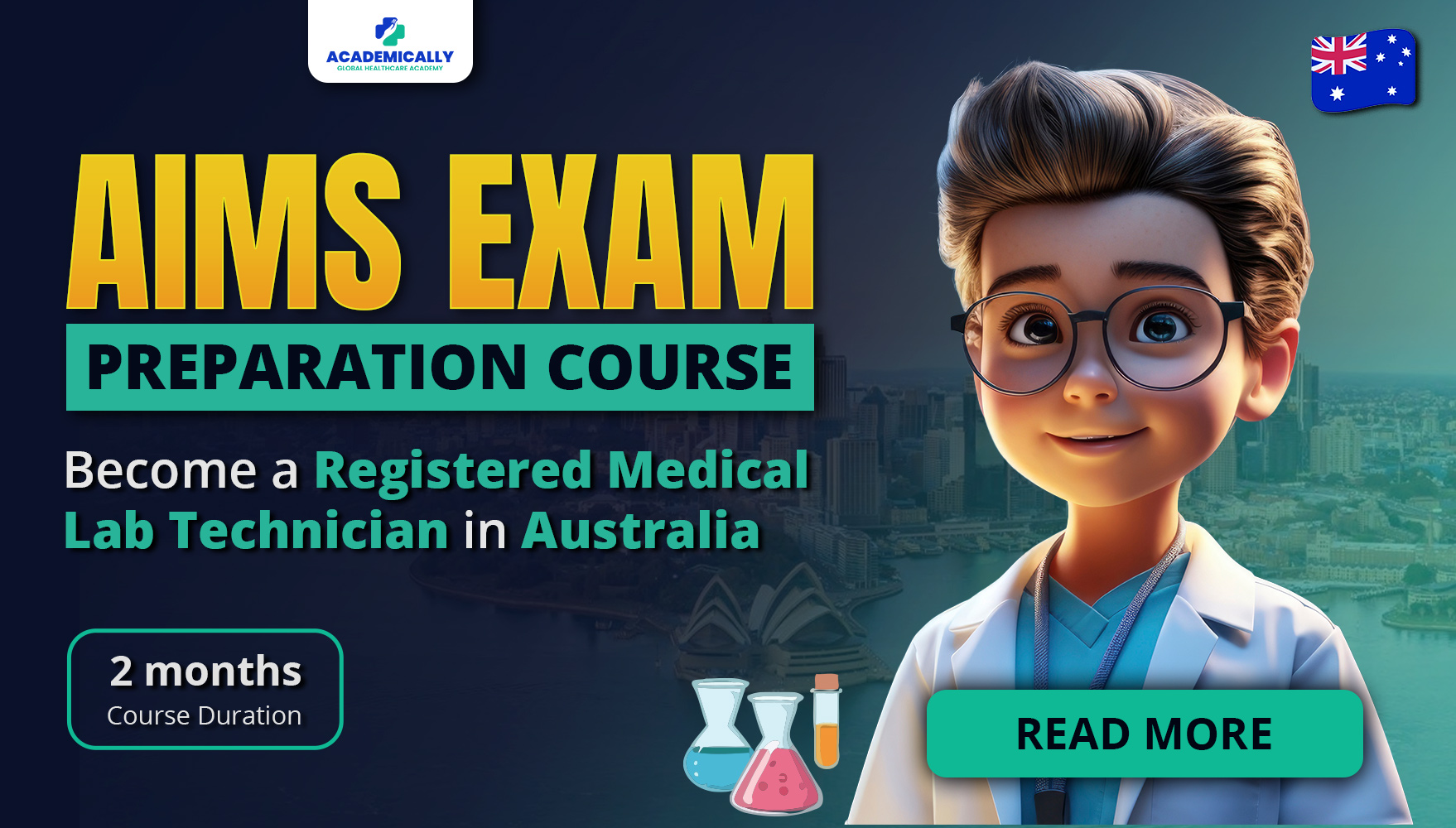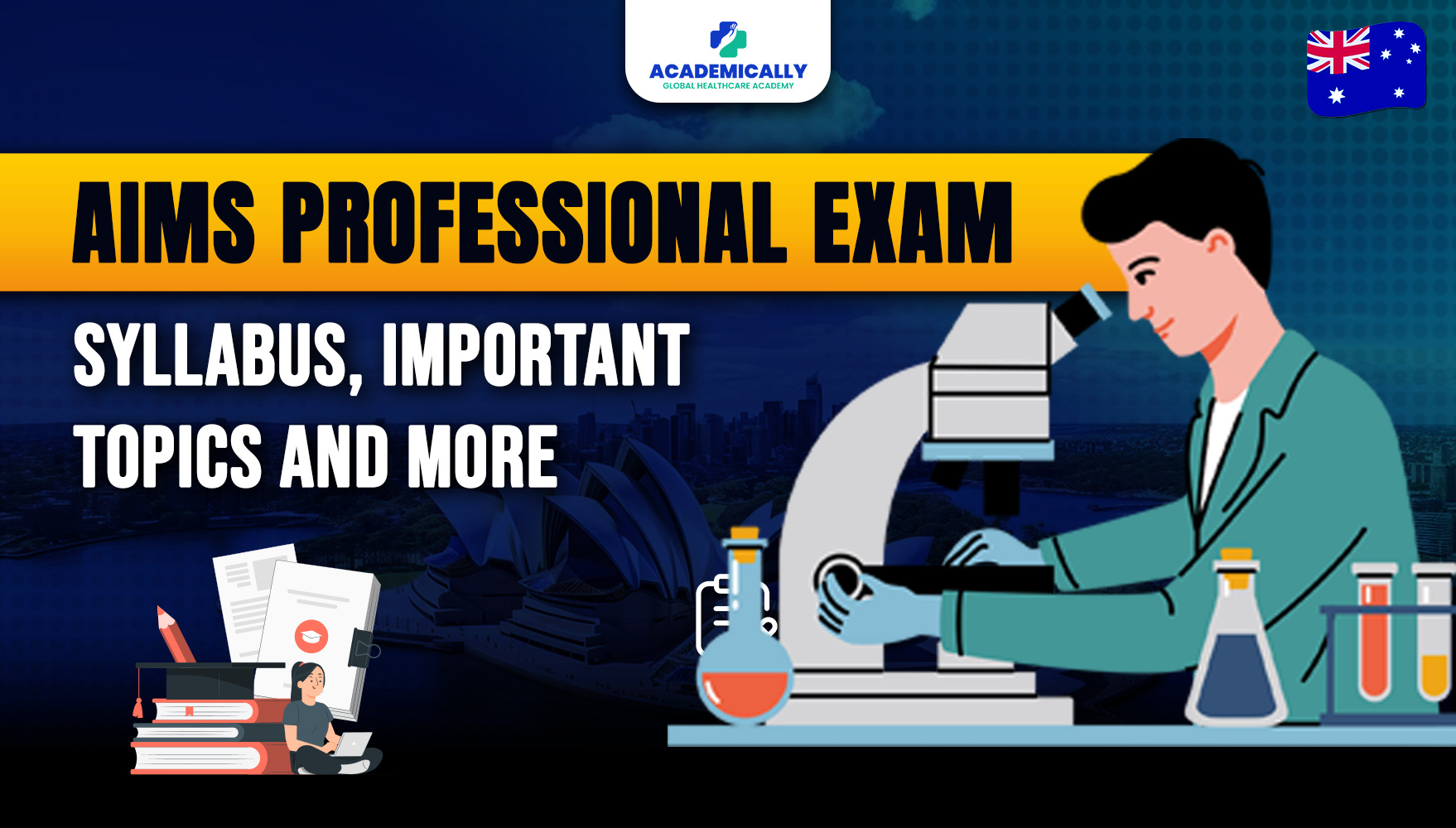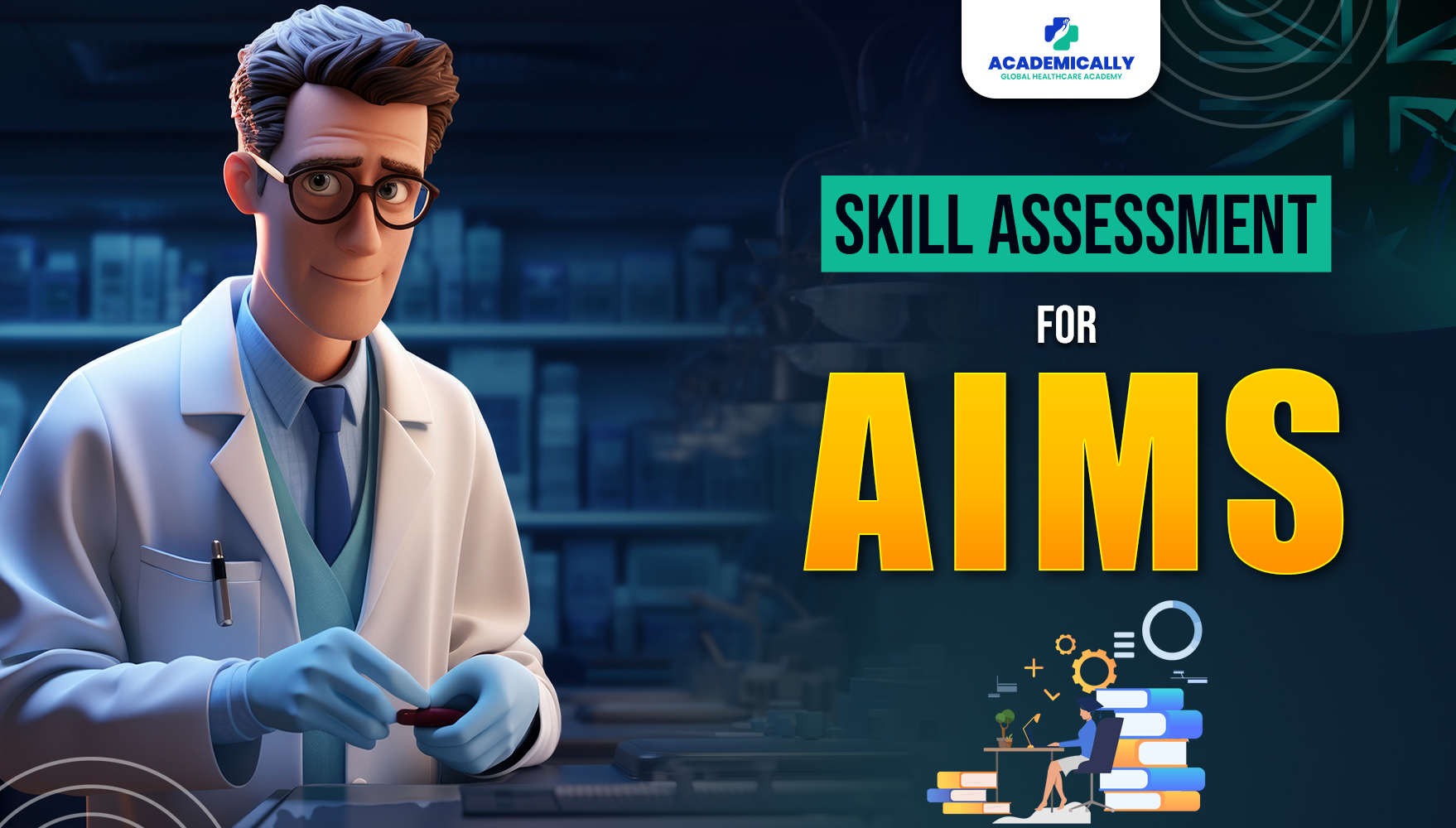Introduction
AIMS is a competency and proficiency analysis test conducted by the Australian Institute of Medical and Clinical Scientists (AIMS). On passing the AIMS exam in Australia, a person becomes eligible to work in the post of a Medical Laboratory Scientist in government and private hospitals or healthcare institutions.
This blog is the perfect guide if you aim to take the AIMS exam and clear it on the first attempt. Today, we will discuss the AIMS exam of Australia in detail and all the topics that come in the exam.

Medical Laboratory Scientist
The Medical laboratory scientist (MLS) is an in-demand profession in Australia. The Australian Institute of Medical and Clinical Scientists (AIMS) is the body that assesses international candidates who aspire to work as medical laboratory scientists and technicians in Australia. Applicants are evaluated based on scores on the AIMS exam.
Candidates who qualify for the AIMS exam are evaluated based on their educational qualifications and work experience. Consequently, they are designated as either medical laboratory scientists (MLS) or medical laboratory technicians (MLT) by the AIMS board members.
Medical laboratory scientists are employed in medical pathology laboratories, hospitals, clinical forensics, pharmaceutical industries, biotechnology companies, etc.
To help physicians diagnose, treat, and prevent human disease, they perform medical laboratory tests on blood, body fluids, and tissues using information and techniques from numerous scientific fields.
In Australia, a medical laboratory scientist makes an average pay of $80,543 per year or $41.30 per hour. Most experienced workers earn up to $116,286 annually, while entry-level posts' wages start at $78,933 annually.
AIMS Exam Syllabus
Let us now understand the syllabus of the AIMS exam deeply and the topics that are covered in it.
Anatomical Pathology
- Preparation of specimens for light microscopy, including fixation and tissue processing, decalcification technique and general staining methods such as Haematoxylin and Eosin stain, Van Gieson stain and Masson Trichrome stain
- Normal histology, especially basic tissue types
- Histochemical methods as applied to light microscopies such as PAS and Perls Prussian Blue for Iron
- Fixation of cytological specimens
- The Papanicolaou staining technique
- The cytological features of inflammation and neoplasia in cervical smears
- Normal cell types in cytological specimens
Chemical Pathology
- An understanding of the underlying techniques utilised and methodology behind the measurement of common chemistry analytes and their clinical utility, including:
- Blood gas and electrolyte measurement
- Urea, creatinine, and creatinine clearance, uric acid
- Glucose, glucose tolerance, HbA1c
- Liver function tests
- Lipid analysis
- Plasma proteins and protein electrophoresis
- Specific plasma proteins, e.g., CRP
- Principles of enzymatic analysis
- Enzyme tests, e.g., amylase, creatine kinase
- Calcium, phosphate, magnesium
- Bilirubin, including neonatal bilirubin measurement
- Myocardial function tests
- Common tumour markers, e.g., Prostatic specific antigen, CEA
- Basic virology tests are now performed in core laboratory settings
- Endocrinology, such as Thyroid function tests and Adrenal function tests
- Bioinstrumentation, including Immunoassay, spectrophotometric assays and Point of Care Testing
- Quality Control concepts as they apply to the automated biochemistry laboratory.
Genomic Pathology
- Basic understanding of inheritance
- Structure of DNA and all forms of RNA
- Mitochondrial DNA
- Transcription and translation
- Influence of Epigenetics on Phenotypes
- Chromosome structure and common pathologies associated with chromosomal abnormalities
- Common mutations in oncology, inborn errors of metabolism
- Principles of basic thermal and isothermal PCR techniques, including sample preparation and use of controls
- Principles of reverse transcriptase PCR, real-time PCR and multiplex PCR
- Sample integrity for DNA and RNA-based techniques
- Awareness of next-generation sequencing (NGS) techniques.
Haematology
- Principles of automated cell counting
- Macrocytic anaemia
- Microcytic anaemia
- Normocytic anaemia
- Myeloproliferative disorders
- Lymphoproliferative disorders
- Production of erythrocytes, leucocytes and platelets
- Iron metabolism
- Intrinsic and extrinsic coagulation pathways and methods of testing
- Bleeding disorders
- Anticoagulant therapy and methods of monitoring this therapy
- Natural anticoagulants
- Fibrinolysis
- Malaria testing and species
- Quality control in haematology and coagulation
- Pre-analytical factors in haematology and coagulation.
Immunopathology
- Basic understanding of the structure and function of the immune system
- Adaptive and acquired immune mechanisms
- Cellular and humoral immune responses
- Immunoglobulin Properties and Functions
- Key cytokines i.e., IL-1, IL-2, IL-4, IL-6, IL-17, TNF and their functions
- Monoclonal antibody production, properties and uses
- Mechanisms of Hypersensitivity and their laboratory investigation
- Acquired and inherited immune deficiency conditions, major autoimmune conditions and their laboratory investigation
- Principles of immunology-based assays, e.g., immunophenotyping using flow cytometry, immunochromatographic techniques, solid-phase immune assays, and immunohistochemical techniques.
Medical Microbiology
- Basic knowledge of infectious diseases and organisms most commonly associated with these diseases. There will be a greater emphasis on bacterial diseases, but some knowledge of parasitic, fungal and viral diseases is also expected.
- Collection, handling and processing of samples, including the minimum criteria for acceptance of samples
- Knowledge of normal flora (indigenous flora) of major body sites or absence of normal flora in sterile body sites
- Presumptive identification of major groups of bacteria based on microscopic and colonial morphology on a variety of common media, including chromogenic media, and the use of key basic identification tests such as catalase, oxidase and atmospheric growth requirements
- Principles of major methods of susceptibility testing, i.e., disc diffusion, agar dilution and broth dilution and the relationship between breakpoints, MIC and susceptible/resistant categories
- Microscopy: Function and maintenance of a modern binocular microscope, including setting up and using for bright-field, phase-contrast and dark-field microscopy
- Staining techniques: Gram stain, Ziehl Neelsen stain, Modified ZN stains
- General principles of quality control and quality assurance as it applies to microbiology
- Safety in the microbiology laboratory, Biosafety Cabinets, and Biosafety levels.
Transfusion Science
- Antibody Structure and Function
- Antigen/antibody interaction
- Antibody production
- Blood donation testing
- Blood components
- Blood group systems
- Antibody detection and identification
- Pre transfusion testing
- Haemolytic disease of the foetus and newborn
- Quality assurance in the blood bank laboratory
- Internal quality control and external quality assurance in the blood bank.
Laboratory Safety and Quality Control
- Safe handling of biological specimens.
- Safe handling of hazardous chemicals.
- Sterilisation and disinfection procedures.
- Handling of infectious specimens.
Principles of Quality Assurance and Quality Control
- Basic charting and rules for rejection of results
- Simple statistical evaluation, Reference ranges methodology parametric and non-parametric
- The role of internal quality control and external quality assurance
- Uncertainty of measurement.
Basic Laboratory Procedures and Equipment
- Normal and molar solutions
- Basic laboratory calculations
- Basic laboratory equipment and its appropriate use
- Spectrophotometry
Parting Words
Only with the right approach and the correct guidance can you clear the exam on the first attempt. Most students have the knowledge and expertise but often need more advice and support.
Academically, we offer the best expertise to the aspirants, whether students or professionals, so that they can clear the exam on the first go. We take pride in having an outstanding pass percentage in our batch, and we are here to turn your dreams into reality.
Fill up this form for a free one on one counselling session.




